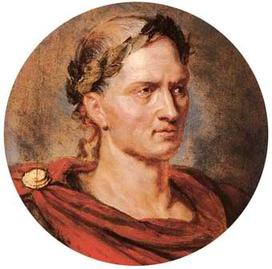Imperial Russia used the “old style” Julian calendar that was seriously out of kilter with the solar seasons and religious holidays—in particular Christmas and Easter. The Russian Orthodox Church had political and religious issues with the Pope in Rome that dated back centuries, and refused to change to Pope Gregory XIII’s Gregorian reform calendar introduced in 1582.
The Julian calendar lagged the Gregorian calendar by 12 days. For example, Christmas, 25 December 1916 in the Gregorian calendar was 7 January 1916 in the Julian calendar. On the first of February 1918, Vladimir Lenin ordered the Soviet government to switch to the “new style” Gregorian calendar—so that the USSR would be in synchronization with the rest of the world.
Julius Caesar, Emperor of Rome. (July 100 BC to 44 BC)
Julius Caesar introduced the Julian calendar in 45 BCE (Before Common Era) to reform the old Roman calendar that was inordinately complex and seriously out of date. Over the following years, most of the civilized world adopted this calendar—even though it had serious errors. For example, this calendar introduced a one-day gain every 128 years, or about three days every four centuries as compared to the equinox and the seasons.
I invite you to join the Czar Nicholas’ Christmas ball on the 7th of January 1917 in the Winter Palace, St. Petersburg, Imperial Russia— set in my historical novel titled St. Catherine’s Crown. Formal gowns for the ladies and with a tiare russe and gentlemen with white-tie, tails, and miniature medals if you’ve earned them.
